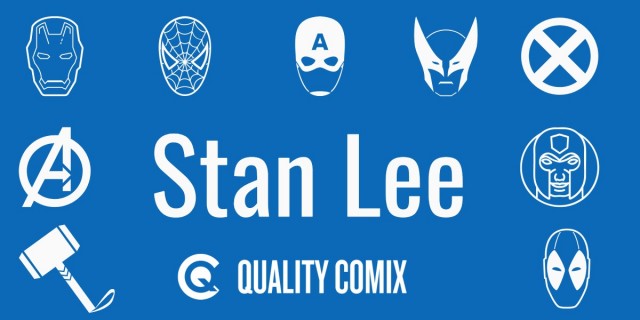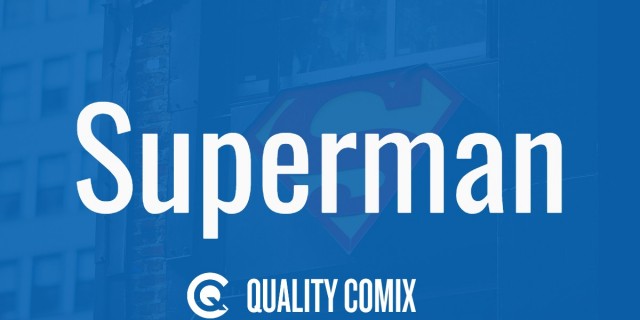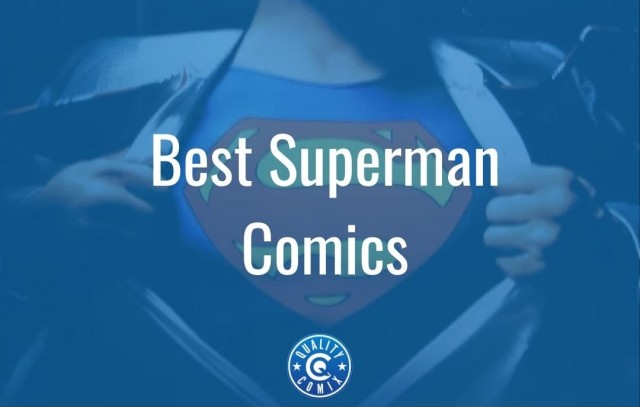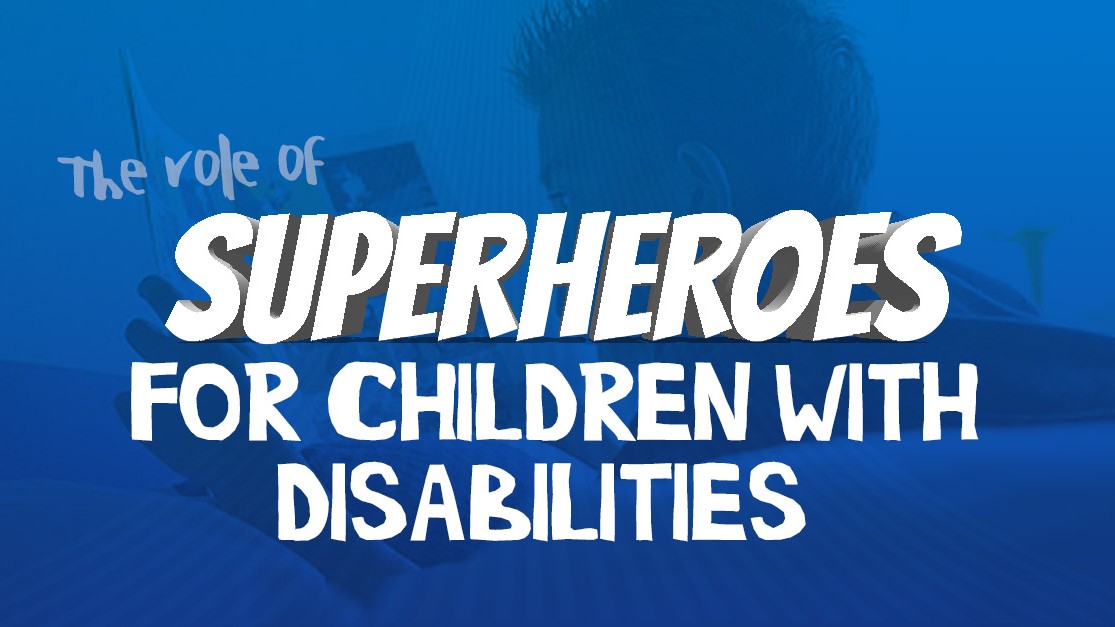
Explore the important role comic books and superheroes can have for kids with disabilities — with insights from parents and experts.
Parents whose children have a significant disability live in two worlds. They experience the same joy that any parent does as they watch their child grow and develop. The hopes and dreams don’t change when you parent a child with a disability, but they do have to deal with more obstacles to get there.
It’s a parent’s job to be an advocate for their child. When that child has a disability, any disability, whether it is developmental, physical, or mental, that role may be confusing and sometimes emotionally draining.
There are special education and Individual Education Plan (IEP) landscapes to navigate, for example. Parents must become health care specialists to tackle the unique medical challenges that come with some disorders, too. All this while they dig through miles of red tape to understand government benefits and find ways to put food on the table.
Having a disability makes a child vulnerable in society as well. They face discrimination, negative attitudes, and lack of opportunity. They fight stigma daily. Parents strive to show both their children and their community that disability isn’t the same thing as inability.
What is clear, though, is that comic books are important to most kids, regardless of their background or disability. Here, we explore how comic books and superheroes help kids with disabilities, how some heroic parents are paving the way for more diverse superheroes, and the future of comic books when it comes to disability.
Related: Top Comic Books of All Time: The Most Influential Comics in Pop Culture
How Comic Books Help Kids with Disabilities
The role of comic books and superheroes can help children with disabilities in many different ways. Whether it's a learning disability, mental disability, or physical disability, comic books can have a positive effect on children, their self-esteem, and how they are perceived by their peers. Here are a few child development experts that weighed in on the matter:

Laura Phillips, Child Mind Institute
On how comic books role of the development of children with dyslexia and other disabilities:
Comic books, especially those featuring children with disabilities, can be incredibly helpful in developing literacy, self-awareness, self-esteem, and self-advocacy skills among children with disabilities. When reading is hard, children don't want to do it. It's important to present children with a range of reading materials; even if it's the back of a cereal box. A comic book that is colorful, humorous, and engaging, while featuring relatable characters may be particularly appealing for students with dyslexia. Surrounding children with portrayals of characters who share their struggles is so important to help them understand their learning profiles and how their style of learning can actually become their superpower. It's also important for children who don't have learning disabilities to understand different learning styles so that they can build tolerance and empathy for differences.

Rayma Griffin, Understood
On how comics affect the development of children with learning disabilities:
Comic Books offer an attractive alternative to traditional books for struggling readers because of their use of visuals, mature themes, and more limited text. Comic books hook kids with their adventure stories and superheroes while teaching positive messages to kids who struggle with role models, like helping others, doing one’s best, working as a team, persevering in tough situations, and that being different is OK. The stories provide life lessons and skills of coping with difficulties, problem-solving, and discovering and using unique strengths that resonate with kids with learning disabilities. For kids with learning disabilities, any genre that gets them reading and helps them embrace their uniqueness should be explored, and comic books provide that unique opportunity.
The Hard Truth of Superheroes and Children with Disabilities
At Quality Comix, we believe comic books are the ultimate creative play for kids of all ages. Who doesn’t love a superhero? X-ray vision, invisibility, superhuman strength — these wonders of the universe are flawless and invincible.
The truth is that mainstream comics don’t represent the world these special kids and their parents know, though. Not enough comic books celebrate the uniqueness of those with disabilities, and that perpetuates the stigma.
Every child with a disability is a superhero in their own right, but will they see themselves reflected that way in most comic book characters? Wouldn’t comic book characters with disabilities allow them to relate on a more personal level?
We think the super world of comics should show all children that being different is powerful. That disabled superheroes can win, and that comic book characters with mental illness are worthy.
There’s no better way to represent the potential of being different than with comic books that show what makes us unique as a society — our diversity.
History of Comic Book Superheroes and Villains with Disabilities
How many characters with disabilities have been featured in comic books over the years? Here’s an infographic outlining superheroes and villains from both DC and Marvel who have had disabilities from the years 1940 to 2000.
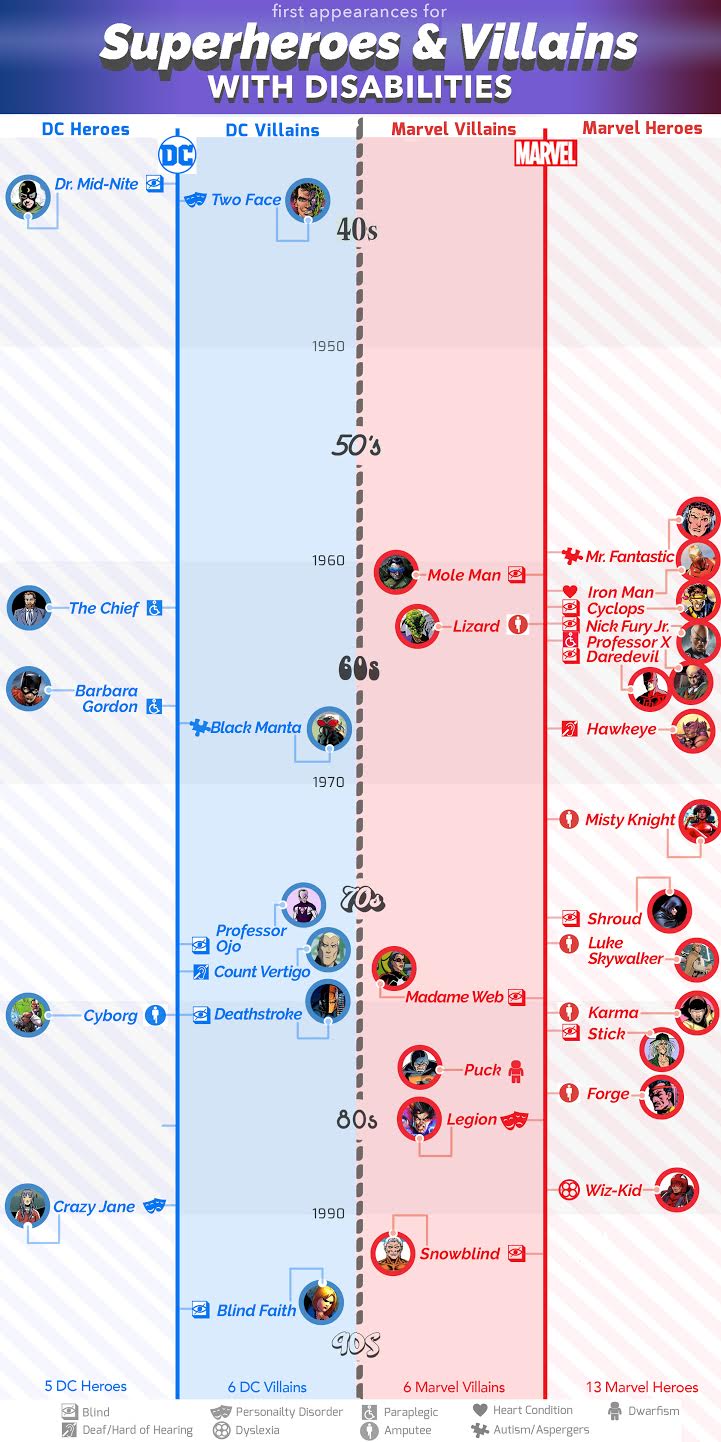
Key Takeaways
- While DC Comics had the first superhero (Dr. Mid-Nite, 1941), Marvel had way more superheroes overall (13 compared to DC Comics’ five).
- From the 1940s to the end of the century, DC had more villains with disabilities than heroes.
- Twelve of 30 total characters are blind. The next leading disability among comic book characters are amputees (six total).
- Characters with known learning disabilities are slim: only three out of 30 total. The only learning disabilities represented from 1940-2000 are autism and dyslexia.
- There’s a clear lack of diversity of disabilities and disorders in superheroes, and protagonists, in past years. For this reason, the parents and disability advocates below took matters into their own hands.
Meet the Super-Parents Creating Superheroes With Disabilities for Their Kids
In an age where self-publishing makes it easier than ever to publish comic books, these comic book-fan parents are taking action to address the lack of superheroes with disabilities. Inspired by their children with disabilities, they have turned their comic book dreams into a reality — by publishing comic books with protagonists and superheroes with disabilities.
Many of these comics are available for purchase.

Led Bradshaw, Creator of “The Adventures of Jake Jetpulse”
Led created created a comic book for his son, Jacob was diagnosed with an autism spectrum disorder. Channeling Jake's love of superheroes, Led created "The Adventures of Jake Jetpulse" as a way to communicate with his son and pull him into learning.
Q&A with Led Bradshaw
What inspired you to create your comic book?
Autism became a part of my life back in 2014. My son Jacob was diagnosed with an autism spectrum disorder at the age of 4 and he was struggling academically. Like most parents, receiving the diagnosis was confusing and daunting because I didn't understand what autism was. After extensive research, I found the benefits of art therapy for individuals living with autism. For 20 minutes a day, I incorporated art therapy exercises into his daily routines to help reinforce his lessons. It wasn't long before I noticed that he had created a superhero universe of his own. I was amazed by what he created. This led me to the decision to combine his homework with our mutual love for superheroes. The result was jake Jetpulse.
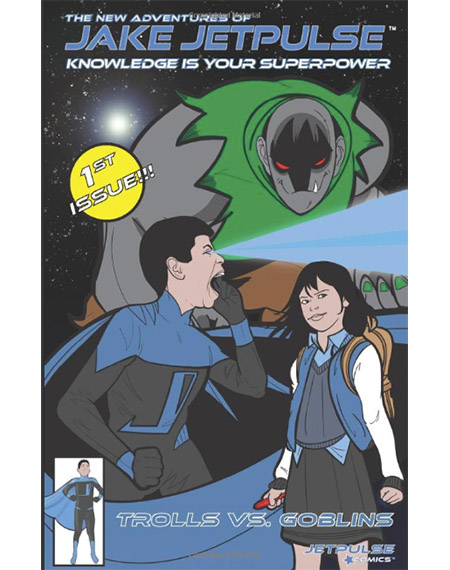 What effect do comic books have on children in today’s age?
What effect do comic books have on children in today’s age?
Art is a great way for children on the autism spectrum to express themselves. The hallmarks of autism are challenges with social interaction, as well as verbal and non-verbal communication. With art, there are no words. This makes kids feel more at ease because they no longer have to rely on finding the words that are often difficult for them to say.
How has the role of superhero changed over the years compared to today?
Growing up, I realized that superheroes were called to action because of the great trauma that they suffered in life. It was either the death of a loved one or a horrible accident that made them who they were. I feel like the world has shifted from the square-jawed archetypes and are moving towards heroes who are more relatable to everyday people.
What effect has "Jetpulse Comics" had on people?
Creating Jetpulse Comics has given me the opportunity to engage students with a fun, visual approach to learning. Jetpulse Comics is all about empowering children to unleash their inner hero. Our website has fun sensory activities that help kids develop the fine motor skills necessary for achieving daily tasks. Fun activities like homemade slime and play dough. Our latest comic teaches kids how to create their very own superhero. Jetpulse Comics is very hands-on and interactive. So far, the kids love it. The parents love it more! It's great to know that Jake and I are making a difference.
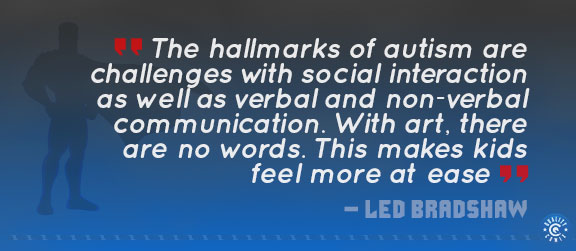
Comic Books & It's Effect on Children with Autism
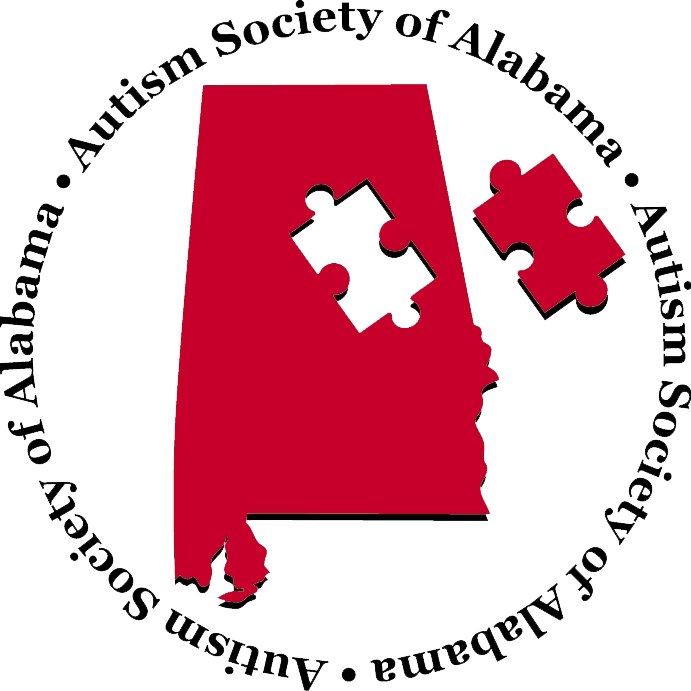
Todd Tomerlin, Autism Society of Alabama
What is autism and how does it affect day-to-day life?
ASD is a neurodevelopment disorder that can affect the individual diagnosed in a wide variety of ways. Individuals can fall anywhere on the wide spectrum and it ranges from non-verbal to verbal but both usually lack in communication and social skills, have sensory issues ranging from sound to light to texture of foods or even clothing and also in most but not all but have the need for a strict schedule as well as particular interests they observe and are very knowledgeable about that interest but at the same time struggle mightily in other areas.
ASD not only affects the individual, but also parents and siblings as well. From following a regiment of schedules to therapies such as Occupational, Physical, Feeding and Speech therapy along with ABA therapy days can become long. Hopefully, there are small victories along the way that can make you cry for joy! These are things like saying that first word or if non-verbal using the communication device to communicate for the first time, or a small interaction with a sibling, cousin or friend. If you're not living with ASD it's really hard to put it in perspective with words. It's difficult, confusing, heartbreaking but the small victories put smiles on your face.
What role do you think superheroes and comic books play for kids with autism?
Superheroes can and do play a huge part with those on the spectrum. I love to see them pretend, regardless of age, and acting out their favorite superhero and how being around superhero characters just light them up with a smile which is always infectious. Even for us "neurotypicals", superheroes can make us feel strong and like you can conquer anything, imagine that with the creative mind of those with ASD? Comic books and superhero movies give those on the spectrum the ability to portray themselves as someone saving the world and in some cases they are doing just that.
Dan White, Creator of “Department of Ability”
Dan created a comic book for his daughter, Emily, who has spina bifida & hydrocephalus. When Emily didn't see herself reflected in pop culture, Dan acted on the idea to create a comic book, which would later become "Department of Ability".
Q&A with Dan White
What inspired you to create your comic book?
It was when Emily took receipt of her first wheelchair and started to look for relevant imagery. In all the books and television shows, she was enjoying, I could see her obvious sadness, and I asked her what was wrong, she replied, "I don't see disabled people like me on the Telly, are we not allowed?'. That was my inspiration to drag the media industry into reality, into the 21st century. This comic can change the world if allowed.
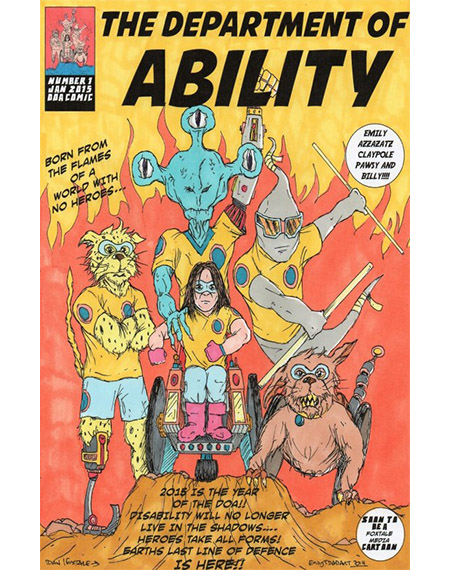 What effect do comic books have on children in today’s age?
What effect do comic books have on children in today’s age?
It has an incredible inclusive effect. Representation is key! Inclusion is not a delusion! Every child, regardless of ability, has the absolute right to representation. The world is a beautiful mix of cultures, abilities, and color, and each and every one is important, powerful and deserves the chance to shine. The effect of representation is immeasurable, the confidence, the belonging the feeling of unity, and deserved inclusion. Every child, every time.
How has the role of superhero changed over the years compared to today?
The problem is we are swamped to the point of a deluge with Heroes. However, there is a current trend of showing a human side to them, but we need to show the physical differences also. The superhero has changed from the all invulnerable superman to a more emotive and troubled character; however, the "diverse net" has not been thrown far enough, we must show that disability has every right to become a hero.
What effect has "Department of Ability had on people?
Its effect is currently global. Emily is now her own role model! The book encourages, subtly, interest, dialogue, and a new view on disability. Children, of all abilities who read it, love it, see beyond the disability aspect, and see the adventure, the fun, the adventure. Disabled children see themselves finally in print and color, something of their own, which they share with every other child. This comic is a game-changer, it doesn't lecture, it builds roads between communities of children, its just heroes who are "born to be different, born to save the world." It's just a shame the major industry of publishers refuse to print it, especially in paralympic year 2020
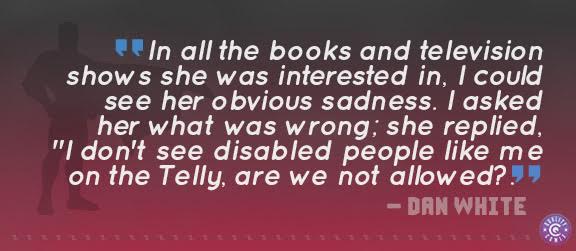
Dan is currently raising money to help finish his comic book. If you'd like to support him, you can donate using this link: https://www.justgiving.com/crowdfunding/dan-white-889
Comic Books & It's Effect on Children with Spina Bifida

Spina Bifida Association of Kentucky
What is spina bifida and how does it affect day-to-day life?
Spina Bifida is a neural tube defect that occurs within the first 28 days of pregnancy where the spinal column fails to close properly. It's the most common permanently disabling birth defect compatible with life and is associated with several other medical complexities such as hydrocephalus, chiari II malformation, varying degrees of paralysis, and more. Spina Bifida affects everyone differently. Some experience mobility issues and need braces, crutches, walkers, wheelchairs or a combination of assistive devices. Sometimes changes within the brain cause learning challenges. Damage to the nerves in the spinal cord may cause individuals to use the restroom differently, visit many doctors and specialists, and even have multiple surgeries. Instead of focusing on what they can't do, it's important to not only focus on what they can do but find a way to make the world truly accessible. As a parent, I want my daughter to grow up with the ability to problem-solve; instead of looking at something and saying, "I can't," figure out how she can.
What role do you think superheroes and comic books play for kids with spina bifida?
For parents of children with Spina Bifida, many parents look to their child as a superhero of sorts. I think all kids gravitate towards superheroes and when a child has so many medical challenges it can give them strength and hope to focus on someone that always defeats the villain. Sometimes Spina Bifida is the villain, but mostly this is just one small part of who they are as a person. Superheroes are typically different or have something about them that sets them apart from everyone else. Spina Bifida sets kids apart. Many parents try to embrace the idea that SB doesn't make their child special, it only makes them different. And in the world of comic books, we embrace the differences. We celebrate them.

Sarah Love, Creator of “Anomaly 23”
Sarah created a comic book for her son, Rune, who is hard of hearing, and also for his classmates that attend Albuquerque Sign Language Academy.
Q&A with Sarah:
What inspired you to create your comic book?
My son, Rune, started wearing hearing aids at a young age. He was into action figures, and I searched for heroes that had hearing aids incorporated into their costume and who were hearing impaired. When I couldn't find any, I pitched the idea of developing superhero action figures that represented kids with medical conditions to an entrepreneur group. From the group, I meet with a friend of Chris Hendrix, our lead writer, who convinced me I needed a storyline before I had action figures. That's how Anomaly 23 came to be.
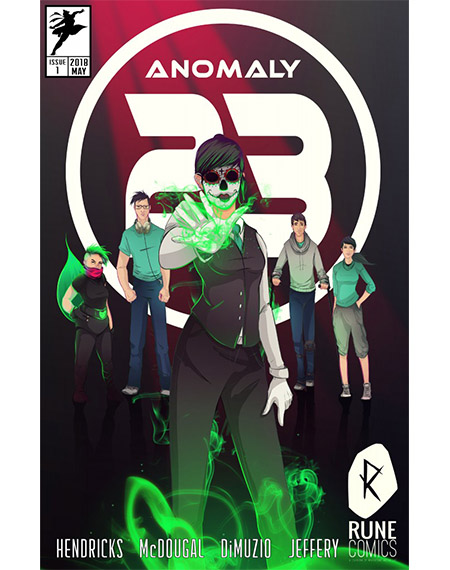 What effect do comic books have on children in today’s age?
What effect do comic books have on children in today’s age?
Currently, superheroes are everywhere. There is huge marketing around the Marvel characters and others. Children are seeing these characters saving the world and doing amazing things. For kids with disabilities, comics are the representation that they are just like everyone else. It provides a colorful world where they are heroes and taking on the villains using their disabilities as their superpowers. This is a powerful reinforcement that their medical condition is not a limitation, but part of who they are, and they are amazing.
How has the role of superhero changed over the years compared to today?
I believe the role of the superhero has changed from being a comic
book character that young kids and teens would read about and imagine being that hero. The reader's imagination would change them into being this flawless person who took on the bad guys. The reader had to change how they saw themselves to fit the role of the superhero in their youthful imagination. Today, I see superheroes with more flaws and not only fighting the villains but sometimes fighting their own image of who they are and struggling with everyday issues. Today's superheroes are just as powerful as before, but more relate-able.
What effect has "Anomaly 23" had on people?
We have had an amazing response to Anomaly 23. This is a comic that both persons with medical conditions and without having been waiting for. The characters are relatable, and using the character's condition as the superpower is giving uniqueness and strength to conditions that have traditionally be viewed negatively. My son loves wearing his hearing aids and can see himself in character Alex. With the release of Anomaly 23, it has made Alex cool to have hearing aids among his friends who don't have hearing aids. I think society will start seeing medical conditions, not as a negative and start looking at the person, not the condition.
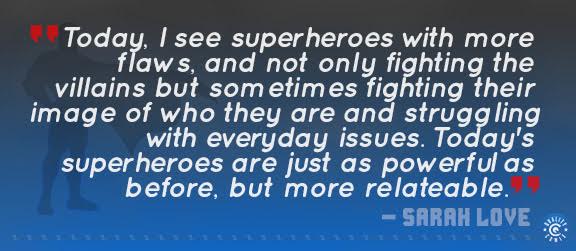
Comic Books & It's Effect on Children Who Are Deaf or Hard of Hearing

Dana Selznick, Center for Hearing and Communication
How can Comic Books Help with Children that are Deaf or Hard of Hearing?
For decades, superheroes have acted as role models for children all over the world. Superheroes especially resonate with children who see themselves differently than others. More specifically, a child with a hearing aid or cochlear implant lives in a world where they are often the minority. Parents come to our office and express that their child feels that they're different from the other children in their class, from members of their family, even from characters in TV show or a book. When children can see a superhero with listening device similar to them, it makes them feel empowered. If a superhero who also wears a hearing aid or cochlear implant can fight bad guys or fly to save people, then why can't they do anything they put their mind to.

Chip Reece, Creator of “Metaphase”
Created a comic book for his son, Ollie, who is also the main character of Metaphase. Much like the character in the comic book, Ollie has down syndrome, and Chip, a comic book fan, wanted to create a comic book to dispel Down Syndrome.
Q&A with Chip Reece:
What inspired you to create your comic book?
My son! Essentially when we learned he would have Down syndrome, I began looking for comics with characters that represented him. At the time nothing existed, so I began to look into doing my own thing.
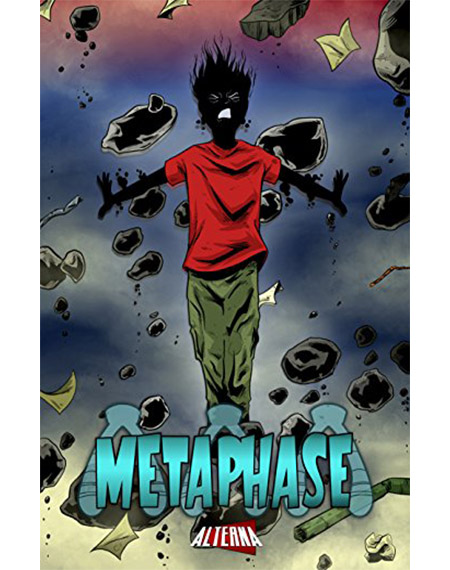 What effect do comic books have on children in today’s age?
What effect do comic books have on children in today’s age?
I think comics as well as any book has the potential to have an impact on a child with Down syndrome. We shouldn't limit the types of stories they or anyone have access to. When it comes to comics, representation matters especially because it's visual storytelling and there are many groups off people, including those with DS, who have been seriously left out of the comic book medium.
How has the role of superhero changed over the years compared to today?
If you look at comic book superheroes, they have traditionally been viewed as the guy that stops the bad guy. Heroes have become more complex over the years in many ways, but the best of them are those that overcome personal challenges. I like my heroes to be relatable. Clobbering bad guys is just the icing on the cake.
What effect has "Metaphase" had on people?
Speaking on a personal level, Metaphase has been an awesome tool to bring awareness to the people that are around Ollie. Metaphase was given to Ollie's school when he first began going and I often got reports that kids referred to him as the "superhero kid". It allowed kids around him, who might normally be apprehensive to approach someone different, the opportunity to connect with him. I'd like to think Metaphase has played a part in making people aware that folks with DS can be super too.
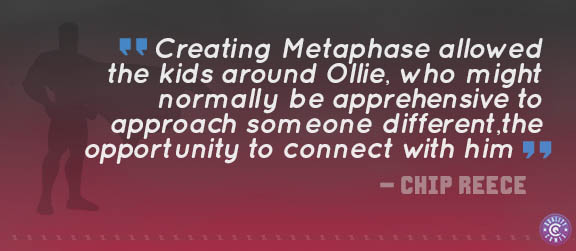
Comic Books & It's Effect on Children with Down Syndrome
Down Syndrome Association of Greater St. Louis
What is the disability and how does it affect kids in today’s age?
How could a superhero with Down Syndrome be an inspiration?
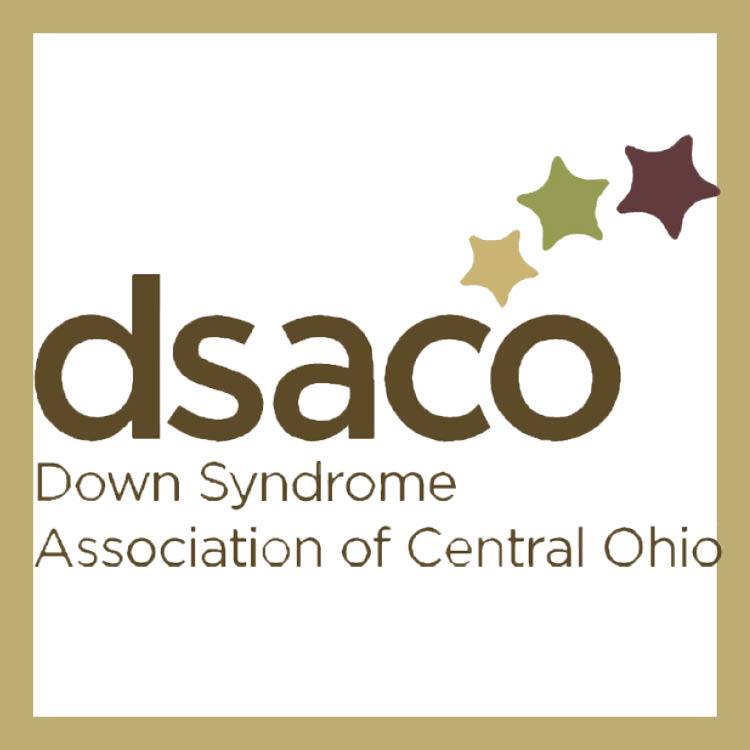
Down Syndrome Association of Central Ohio (DSACO)
What is the disability and how does it affect kids in today’s age?
Parent 1: Though my daughter isn't necessarily a superhero fan, some of her friends with Down syndrome are, and they definitely connect with the characters. Superheroes give us a moral guideline that allows all kids to see that tolerance and standing up to help others is necessary to make the world a great place to live. And comics are a great (and in my opinion, vastly underused) learning opportunity; they encourage kids to read by providing them with relevant content in an easy to understand and highly motivating format.
Parent 2: I think superheroes are characters that individuals with disabilities can look up to. I believe they get strength by watching them in difficult situations. They learn right from wrong, evil vs. good, and reality vs. make-believe in a fun format that is easy to relate to.
How could a superhero with Down Syndrome be an inspiration?
Parent 1: Though my daughter isn't necessarily a superhero fan, some of her friends with Down syndrome are, and they definitely connect with the characters. Superheroes give us a moral guideline that allows all kids to see that tolerance and standing up to help others is necessary to make the world a great place to live. And comics are a great (and in my opinion, vastly underused) learning opportunity; they encourage kids to read by providing them with relevant content in an easy to understand and highly motivating format.
Parent 2: I think superheroes are characters that individuals with disabilities can look up to. I believe they get strength by watching them in difficult situations. They learn right from wrong, evil vs. good, and reality vs. make-believe in a fun format that is easy to relate to.
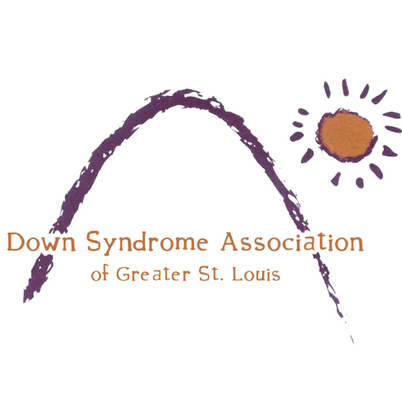
Down Syndrome Association of Greater St. Louis
What is the disability and how does it affect kids in today’s age?
Down syndrome often affects processing and reaction time, so individuals with Down syndrome are most successful when they are given extra time to do things like finish a task or respond to a question. As far as the affects on typically developing people, I think having a person with Down syndrome in your life affects day-to-day by bringing joy, laughter, and a light-heartedness to life that I think we all need.
In school, a student who has Down syndrome may take longer to learn something. Some people who are born with Down syndrome may have some physical conditions surrounding their heart, as well as other conditions. But, because of modern science, many of these conditions are taken care of early in life and don't hinder them from living full lives.
How could a superhero with Down Syndrome be an inspiration?
Everyone is looking for a hero. People with Down syndrome are no different and it is important that your superhero speaks to the challenges that one has I think people with Down syndrome like superhero stories, movies, and books because it is a concept that relatable to so many people. Good vs Evil. It illustrates that being good, kind, empathetic, compassionate, and caring about other people makes you a hero.
As a whole, people with Down syndrome use comics the same way that the general population does. Comics are fantasy and a release from everyday life. They are fun and whimsical.
Publishers Are Working With Parents to Create Comic Books For Their Disabled Children
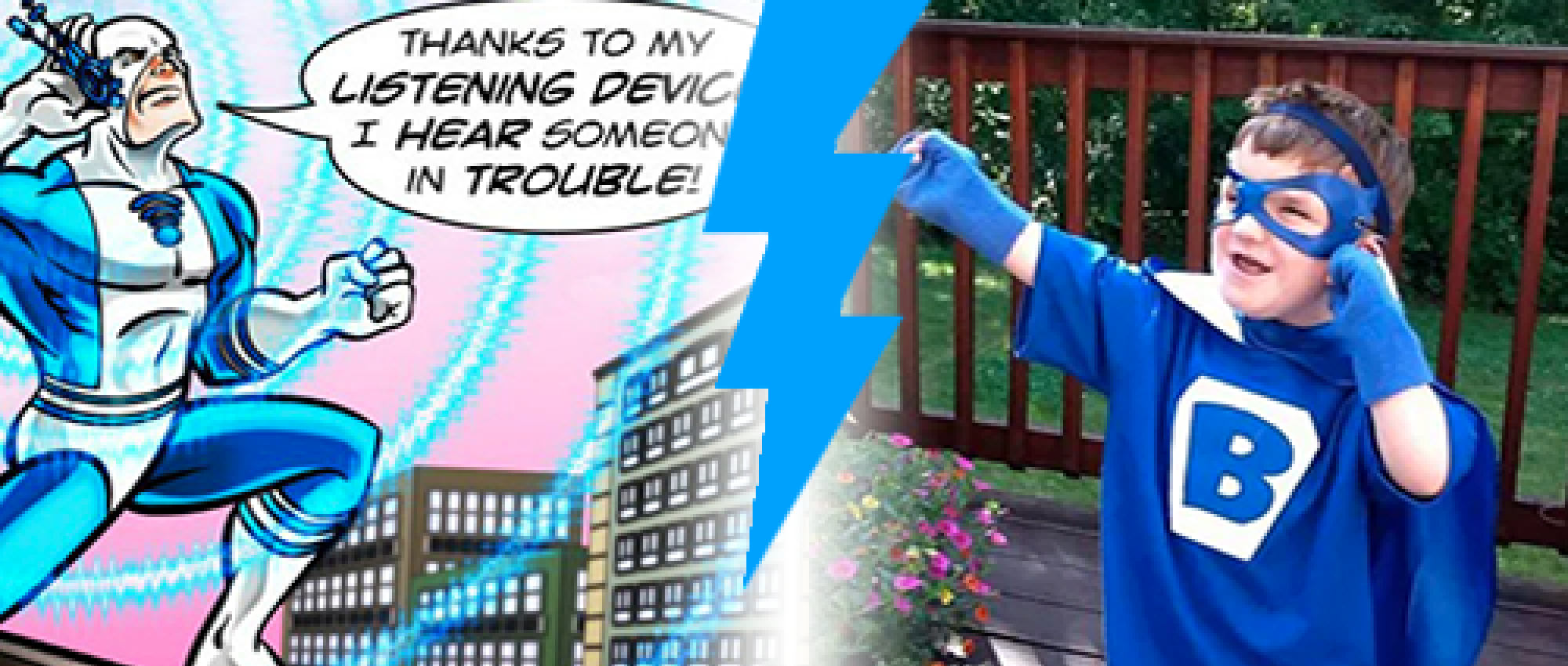
In 2014, Marvel released Blue Ear, inspired by Anthony Smith, a hard-of-hearing 4-year-old comic book fan and his mother. Smith was given a hearing aid by his mother, Christina, and he eventually became tired of wearing it to school. Anthony would say, "superheroes don't wear blue ears" as part of the reason why he would no longer wear the hearing aid.
As a way to try get her son to wear his hearing aid, Christina reached out to Marvel Comics in New York City to tell them about the situation and to propose the idea of creating a superhero based on her son. Marvel loved the idea and worked with her to create a comic book called Blue Ear. The comic book's main character is the exact name of her son, Anthony Smith.
More Recent Comic Books with Disabled Superheroes
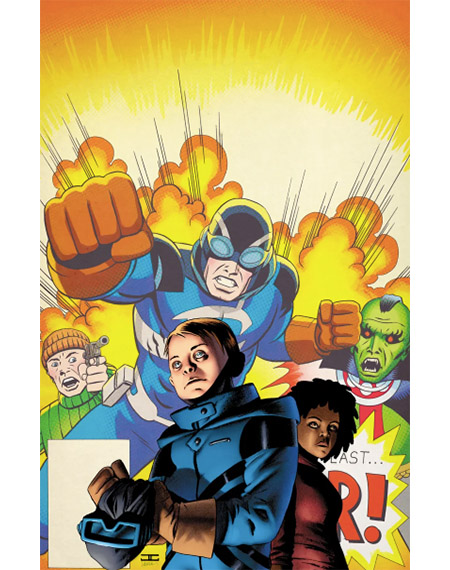 "Superb" - Lion Forge (2017)
"Superb" - Lion Forge (2017)
Comic book publisher Lion Forge created the comic book "superb" and introduced a character named Jonah, a teenage boy with Down syndrome, as a main character in the comic book series. In the "Superb" series, Jonah struggles to find his place in the world and how to use his superpowers of strength, telekinesis, and telepathy for good. The series debuted in July 2017 and has 15 issues.
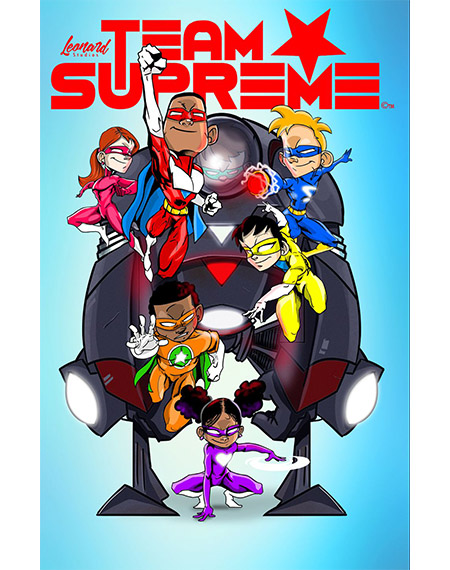 "Team Supreme" - Leonard Studios (2017)
"Team Supreme" - Leonard Studios (2017)
Created by Josh Leonard, "Team Supreme" is a comic book about a group of kids who all have a different disability, but also have superpowers. In the comics, the group of superheroes bands together to take on various bad guys. Character disabilities include epilepsy, autism, blindness, loss of hearing, sickle cell disease, and spina bifida.
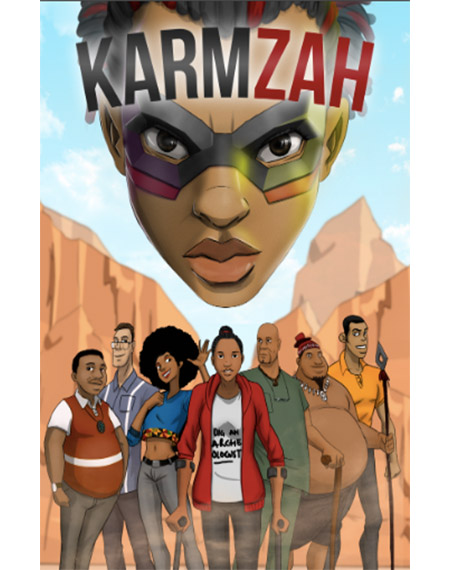 "Karmzah" - Farida Bedwei (2017)
"Karmzah" - Farida Bedwei (2017)
Born with cerebral palsy, Farida Bedwei created "Karmzah" as a way to encourage others who have cerebral palsy. The main character is a superheroine with cerebral palsy whose quest is to fight bad guys who want to destroy the local community in Africa and beyond. In the comic, she gains her superpower using her walking crutches.
Disability Superheroes Moving Forward
For all of those superheroes with the abilities X-ray vision, invisibility, and superhuman strength, we're starting to see the superheroes with disabilities. With the help of parents, we're seeing more comic books being published that include characters with disabilities. Moving forward, the hope is that comic book publishers continue to celebrate the uniqueness of children with disabilities rather than perpetuate the stigma.
Comic books that have characters with disabilities represent the potential of being uniquely different, that disabled superheroes can win and that comic book characters with mental illness are worthy.
Are you looking to sell your comic book collection? Check out our comic book price guide, then sell your vintage comics with Quality Comix. Once you accept our offer, receive an instant payment via PayPal from the most trusted buyer and seller of quality comics online.


